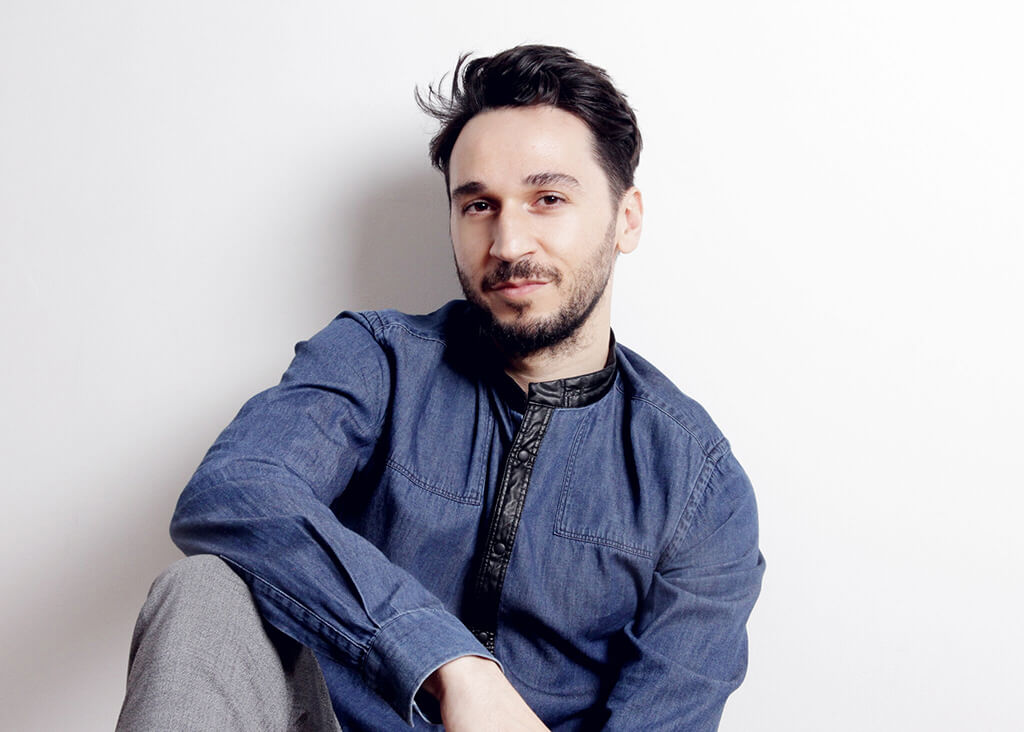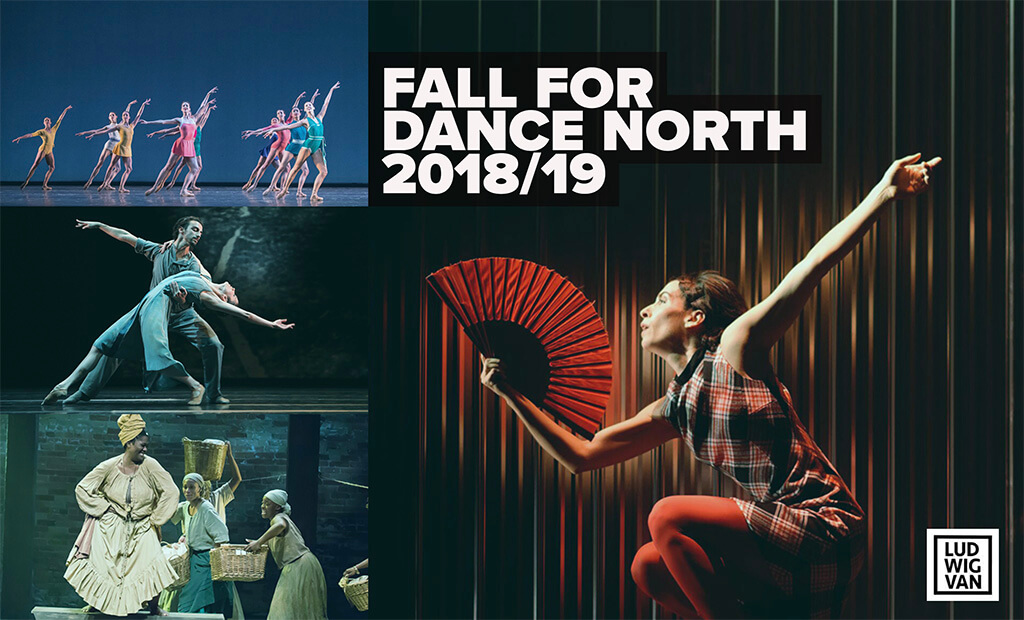
From the very first Fall for Dance North (FFDN) in 2015, the festival has been a runaway success. Every seat in the house is $15, and every performance has been sold out. The festival is the brainchild of Turkish-born artistic director Ilter Ibrahimof, who modelled FFDN after New York’s famed Fall for Dance which is celebrating its fifteenth anniversary at New York City Centre this year.
For most of his career, Ibrahimof has been an international artists’ agent and producer of dance, living first in New York and then Montreal. He now makes his home in Toronto. In the following interview, he explains the genesis of FFDN, why this year’s edition features a significant amount of live music, and what that live music entails.
The Interview:
Ludwig Van: Some readers may not be familiar with Fall for Dance North. Why don’t you give us some background as to why you started the festival.
Ilter Ibrahimof: As an agent and producer, I put together international touring for my clients, but I could never find a presenter for big productions in Toronto, and so we’d skip the city. This led me to think that Toronto would be the perfect place for a New York-type Fall for Dance festival. It would be a great way to bring big companies back to the city. The ticket price is $15, first come, first served, which is a great way to build new audiences for dance. At $15, people are willing to take a risk on dance, and this sense of discovery is important. The program is an exciting mix of local, national and international companies. The Sony Centre is the co-presenter. We have two programs at the Sony, and this year we are introducing a third, more intimate program at Ryerson Theatre. This second venue allows us to showcase riskier new work commissions and emerging artists. There are 11 companies this year, three from Toronto, one from Kelowna, BC, two from Montreal, and a shared Montreal/Los Angeles creation. The international companies come from Cuba, South Africa, the Netherlands and France.
Ludwig Van: I know that dancers love working with live music. How do you categorize the importance of live music at a dance performance?
Ilter Ibrahimof: Live music elevates the quality of a performance. The relationship between music and dance becomes a magical conversation. Live music doubles and triples the effect of dance on the audience. The impact of the sound goes right through the heart — something that a recording can never do. When there is live accompaniment, there is always something less predictable in the performance, so that every concert is unique. It helps keep the dancers on their toes. Whenever we can have live music at FFDN, it’s well worth the extra cost.
Ludwig Van: Programs 1 and 3 have one piece each of live music, but Program 2 has three of the four companies with live accompaniment. Is there a reason for this overload?
Ilter Ibrahimof: Selling tickets is a business, and you can’t lose sight of that aspect. For the first time, we’re featuring a Saturday matinee on Oct 6 that falls right before Thanksgiving, which is tricky timing. In the past, all our performances have been in the evening. I always wanted a Saturday matinee to bring in families, so we’ve built a particularly strong and rich line-up into Program 2 that includes the National Ballet of Canada.

Ludwig Van: Let’s start with Program 1. The live music accompaniment is for the Indigenous contemporary dance company Red Sky Performance.
Ilter Ibrahimof: I’ve been watching Sandra Laronde’s impressive company for a long time. Last year they performed an original full-length work called Adizokan with the Toronto Symphony Orchestra that was composed by Eliot Britton, and choreographed by Laronde and Jera Wolfe. It was a sold-out, smash hit. The piece explores Indigenous connections to the ancestors. Our Adizokan is a special edition that features most of the dance sections and leaves out the musical interludes. The composer has created a special musical suite to accompany this shortened version. Obviously, we can’t afford the TSO, but they suggested the Toronto Symphony Youth Orchestra, so in the pit there will be 88 young musicians conducted by the TSO’s Gary Kulesha.
Ludwig Van: The powerhouse Program 2 opens with Introdans, the acclaimed company from the Netherlands. Tell us about it.
Ilter Ibrahimof: They are bringing Songs of a Wayfarer by the legendary choreographer Jiri Kylian, and it is one of his most iconic works. It features five couples performing love duets, and is contemporary ballet at its most simple and most beautiful. I absolutely believe that the only way to present Gustav Mahler’s haunting score is with live music. The audience deserves a richer and fuller experience so that they can fall in love with Kylian as I have. Of all the great choreographers, I care about Kylian the most. The live music is provided by ten musicians and mezzo-soprano Georgia Burashko from the Glenn Gould School at the Royal Conservatory, conducted by Ivars Taurins.
Ludwig Van: Introdans is followed by Obeah Opera 2019 from Toronto. How would you describe it?
Ilter Ibrahimof: Obeah Opera was first presented at the Pan Am games in 2015, and then at Luminato. This is its latest incarnation. The work is the vision of Nicole Brooks, who wrote the music and libretto. Anthony “Prime” Guerra created the Caribbean-inspired choreography. Obeah Opera features a powerful cast of ten women who sing entirely a capella, and is a retelling of the Salem witch trials from the perspective of Caribbean slave women. It is a rousing, hand-clapping, foot-stomping experience.
Ludwig Van: And then there’s the Big Kahuna – the National Ballet of Canada…
Ilter Ibrahimof: …and the full National Ballet of Canada Orchestra conducted by music director David Briskin. They are performing a large ensemble work, Justin Peck’s Paz de La Jolla, first created in 2013 for New York City Ballet, where he is the resident choreographer and a soloist in the company. Peck is still really young, only 31, but he is certainly making his mark. I love this piece for its abundance of youthful energy. Peck is from La Jolla, and he has choreographed an homage to California sunshine, beach culture, coming of age, and summer love. The score is the vibrant Sinfonietta La Jolla, composed by Czech refugee Bohuslav Martinu in 1950, that actually had its world premiere in La Jolla.
Ludwig Van: And finally, Program 3’s La Otra Orilla from Montreal and their radical approach to flamenco?
Ilter Ibrahimof: This company under dancer/choreographer Myriam Allard and singer/director Hedi Graja is at once modern, hipster, quirky and experimental. They are dedicated to flamenco tradition, which they destroy and then put back together again. They are presenting the world premiere of RITE/a flamenco ceremony. It’s a cabaret-style piece that offers intimate conversations between the dancer, percussion, guitar and vocals.
Ludwig Van: Any final thoughts?
Ilter Ibrahimof: This is a huge expansion year for FFDN. We’ve literally doubled our capacity, offering each program twice, as opposed to a three-day festival. So, new this year is a second venue and a second evening.
****
Fall for Dance North opens, October 2–6, 2018. See www.ffdnorth.com for tickets and details.
- INTERVIEW | Actor Diego Matamoros Takes On Icon Walt Disney In Soulpepper Production Of Hnath Play - April 16, 2024
- SCRUTINY | Opera In Concert Shine A Light On Verdi’s Seldom Heard La Battaglia Di Legnano - April 9, 2024
- SCRUTINY | Lepage & Côté’s Hamlet Dazzles With Dance And Stagecraft Without Saying Anything New - April 5, 2024



